If you have an Italian family, you know that they are people who like to enjoy the good things in life like food to the fullest. That is why among their beverages, espresso coffee is their national emblem of which they are very proud.
Si tienes familia italiana sabrás que son personas que les gusta disfrutar al máximo de las cosas buenas de la vida como la comida. Por eso entre las bebidas, el café expreso es su sello nacional del cual sienten mucho orgullo.
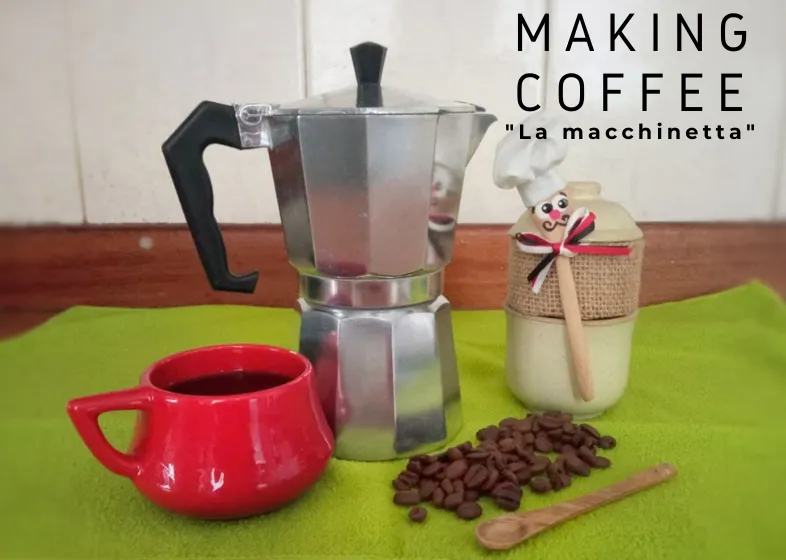

Espresso coffee is a concentrated coffee, strong, with a bitter taste. It is a coffee with a body, strong. For this reason, it is drunk in a small volume 1-2 ounces per cup.
Espresso coffee was born in Italy at the beginning of the XX century, and there were many prototypes of "machines" to filter the coffee infusion until reaching the espresso coffee machines that we know today. As you may have guessed, the first machines were scarce and very expensive, but the desire to make an espresso coffee at home was so great that in 1933 the Italian engineer Alfonso Bialetti created "La macchinetta" or also known as "The Moka".
Un café expreso es un café concentrado, fuerte, de sabor amargo. Es un café con cuerpo, recio. Es por esto que se toma en un volumen pequeño de 25 a 60 minilitros por taza.
El café expreso nace en Italia a principios del siglo XX, siendo muchos los prototipos de "Máquinas" para filtrar la infusión de café hasta llegar a las máquinas de café expreso que conocemos hoy en día. Como han de suponer las primeras máquinas eran escasas y muy cosotosas pero era tanto el deseo de hacer un café expreso en casa en especial para compartir en esas deliciosas sobremesas italianas que en 1933 el ingeniero italiano Alfonso Bialetti creó "La macchinetta" o también conocida como "El Moka".

Well, at my house you can't miss "La macchinetta" because my husband, as a good Italian descendant, loves coffee. Every time he prepares coffee the intense aroma of this beverage floods our house and even if they are not coffee lovers, they end up giving in to its aroma and flavor. All these attributes concentrated in a cup.
The "macchinetta" has several parts, but among them, the heater, filter, and collector stand out.
En mi casa no puede faltar "La macchinetta" ya que mi esposo como buen descendiente de italiano ama el café. Cada vez que él prepara café, el aroma tan intenso de esta bebida inunda nuestro hogar y aunque no sean amantes del café, terminan cediendo ante su aroma y sabor. Todos estos atributos concentrados en una taza.
"La macchinetta" tiene varias partes pero entre ellas destacan el calentador, filtro y colector.
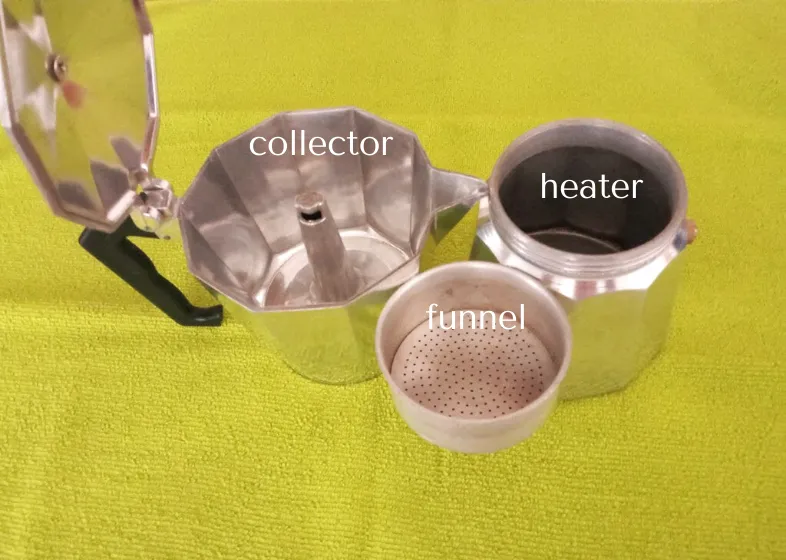

To prepare an espresso coffee in "la macchinetta" you should place hot water in the heater, since this way you facilitate that the coffee filters quickly and does not lose its aroma and flavor.
Then place the ground coffee in the funnel and place the piece inside the heater. Screw the upper part (collector) tightly, put the "macchinetta" on the stove.
Para preparar un café expreso en "la macchinetta" debes colocar agua caliente en el calentador, ya que así facilitas que el café se filtre rápido y no pierda su aroma y sabor.
Luego llena con café molido el embudo y coloca la pieza dentro del calentador. Enrosca la parte superior (colector) bien y lleva "la macchinetta" a fuego medio en la estufa.
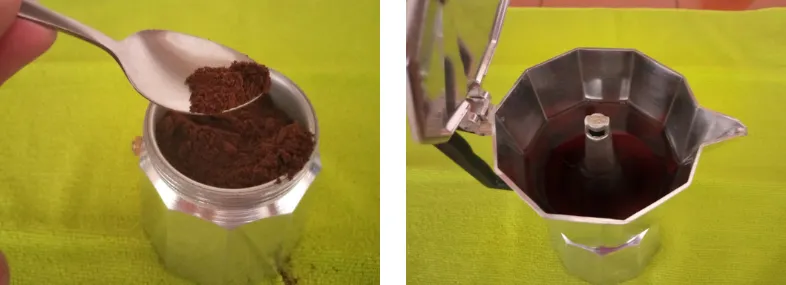

When the water is heated above 80 ºC, the steam pressure in the heater chamber begins to increase, which will cause the water to rise under pressure through the holes in the funnel, which in turn generates the coffee infusion that will go up through the filter immediately above the funnel, but the pressure is so high that the liquid rises through the central column of the collector, filling this chamber with a delicious espresso ready to serve.
Cuando el agua se calienta por encima de los 80 ºC comienza a aumentar la presión del vapor en la recámara del calentador lo que generará que el agua suba a presión por los orificios del embudo y este a su vez genera la infusión de café que subirá pasando por el filtro que está inmediatamente en la parte superior del embudo, pero la presión es tanta que el líquido asciende por la columna central del colector, llenando esta recámara con un delicioso café expreso listo para servir.
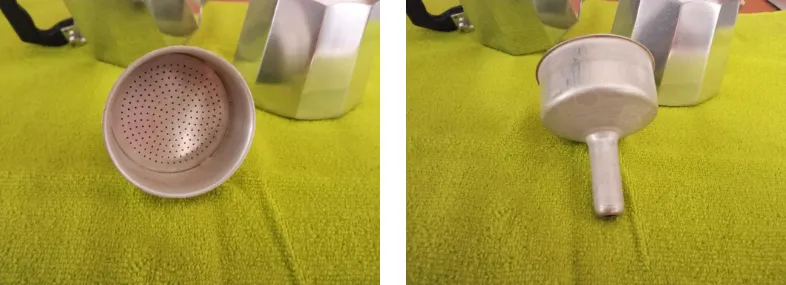
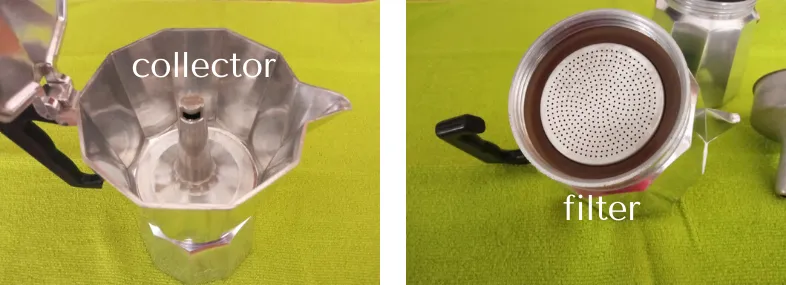

Even if you don't have an Italian family, but if you consider yourself a coffee lover, it is very likely that you know or have this kitchen utensil with almost 100 years of history.
All photos are property of the author.
Aunque no tengas familia italiana, pero si te consideras amante del café, es muy probable que conocozcas o tengas en casa este utensilio de cocina con casi 100 años de historia.
Gracias por leerme. ¡Nos vemos en una próxima publicación!
Todas las fotos son propiedad de la autora.


